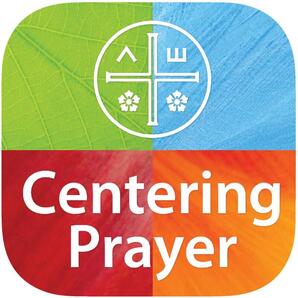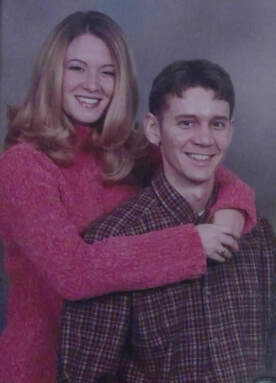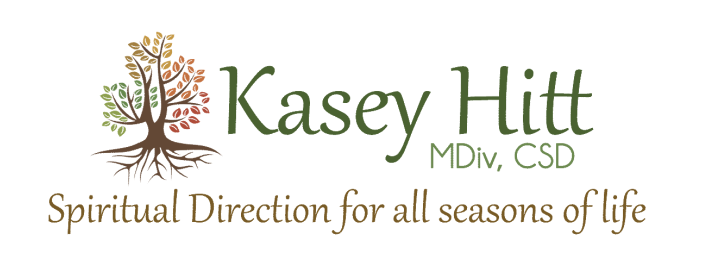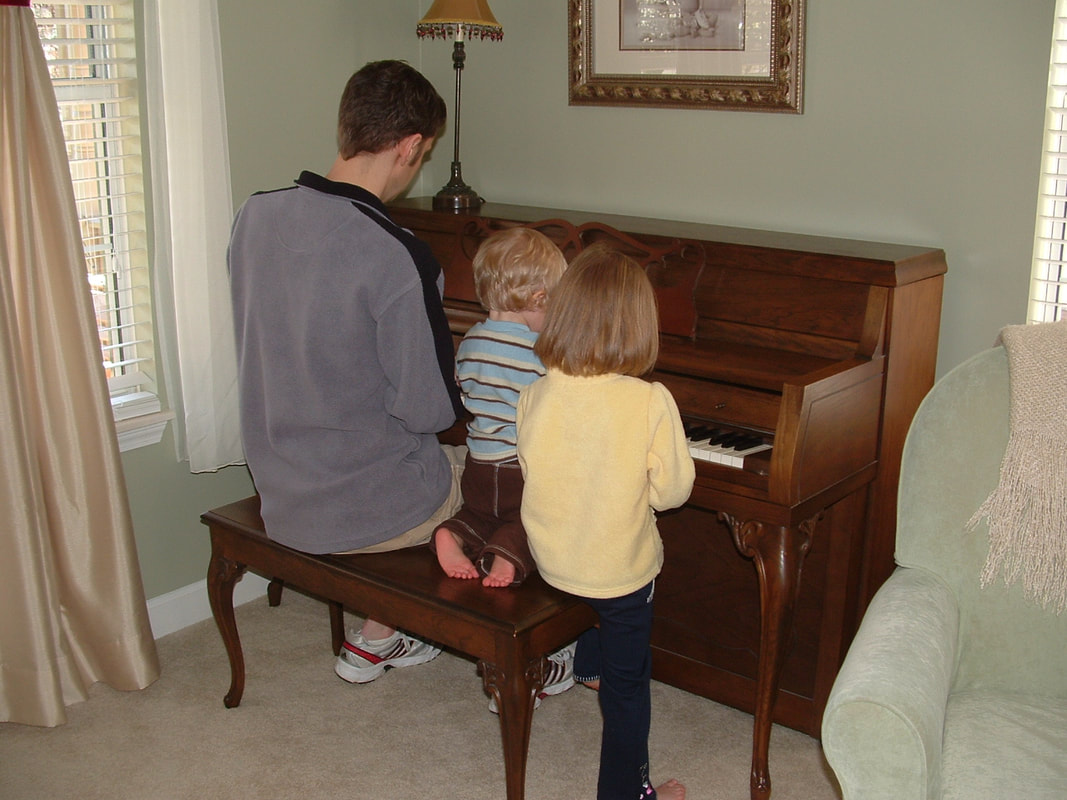 Spiritual practices, like meditation and even church-going, can become spiritual bypass—ways of bypassing reality both outside and inside of us, dissociating from wounds within and without, ignoring the healing work that needs to be done in our inner and outer world. But spiritual practices can also be vehicles for transformation of both ourselves and our world. How?—by giving us new ways of seeing and being (which is the whole point of authentic spiritual practice). Let’s take a look at a few practices... Conscious Breathing: With as little as 10 slow, complete exhales and 10 full, relaxed inhales, we can calm the fight, flight, freeze survival impulse, allowing us to move from a reactive, closed off, defensive place to a receptive, open, deeper place. Centering Prayer: Through daily practice of 20 minutes of silent surrendering to God’s presence & action, we let go of our ego-drivenness and receive inner healing of compulsions and soul wounds. Not only does this bring personal freedom but it releases us from projecting our compulsions and wounds on others and passing them down to our children. Lectio Divina: Spiritual reading allows a word or phrase in a small portion of inspired text, whether sacred Scriptures like the Psalms or a poem, to speak to us. Rather than bringing what we already know or studying it, we allow the text to study us! As we bring our story, our lives, to it, we humbly listen for the wisdom and guidance being offered (which may be encouragement to see a counselor or write a letter to your senator!). Awareness Examen: Looking over our lives at the end of the day through the eyes of God helps us become aware of God’s life-giving presence and action (and the times throughout the day when we were unaware or resistant). The patterns of what is life-giving and life-draining help us discern who we are and what we are to offer this world. Silent Retreats: Extended time in silence and solitude creates space for our souls to rest and play which opens us to better hear the “still, small voice” which may be drowned out by the external noise of daily life or the internal noise of comparing ourselves to others. There are so many practices I could list here but the point isn’t the practice itself, it’s the “fruit.” Seated meditation may not fit you. You may desire some kind of moving meditation, like dance or qigong. Or you may prefer to spend time in nature or doing art. What practices have you found that cultivate love in you? What helps you have eyes to see and tend to the suffering both inside yourself and in others? Which ways of wisdom help you discern what is yours to offer this world (not out of compulsion but compassion)? A Spiritual Director can companion you on this journey of discovery of spiritual practices. But remember, it’s not necessarily the practices, it’s the humans who are transformed by these practices, that this world needs. What do spiritual practices like Centering Prayer offer a hurting world?—YOU! When I was present to him
I saw his crinkled little brow of curiosity looking at the commonplace. Such seeing changed my day. When I was present to her I saw her dark eyes shine while the rest of her danced with delight. Such being invited me to play. When I was present to him I saw his furrowed brow and tired eyes and I was invited into silence. Such sharing meant more than I could say. ____________________________ I wrote this poem in 2012 after being curious about what would happen if I was present to my ordinary surroundings for fifteen minutes. Knowing so much of my time can be filled with my to-do list (of which spiritual practice can be a part), I decided to "throw a stick in the spokes" of my day. Am I ever glad I did! I saw my family members in such a different way in a mere quarter of an hour. And in seeing them, I felt seen by God and was invited into seeing as God sees...and isn't that the whole point of spiritual practice?! Try it. Whether or not there are other humans in your house, be curious as to what you see and how it/they "speak."  https://www.contemplativeoutreach.org/ centering-prayer-method/ https://www.contemplativeoutreach.org/ centering-prayer-method/ While they may share silence and look the same on the outside, join me in taking a look on the inside… Different forms of meditation offer the practitioner different gifts depending on their focus. Some of these forms and gifts are mindfulness, movement, awareness, breathing, insight, chakra-opening, loving-kindness, relaxation, guided, calming, and creativity. As one who meditates, I appreciate and practice a variety of methods and even combine some, but I call Centering Prayer my main practice. However, many do not understand how Centering Prayer offers anything different from other forms of meditation. Centering Prayer was developed by Trappist monks, Fathers William Meninger, Basil Pennington and Thomas Keating, to help bring the ancient practice of contemplative prayer within the Christian tradition to people outside the monastery—which is most of us! Inspired by early Christian contemplatives and the medieval text, The Cloud of Unknowing, their process—20 minutes of silence once or twice a day—allows the power of and presence in Silence to be accessed by those of us who live in the “world of words.” This prayer’s nickname, the "Prayer of Consent," reveals how it differs from other forms of meditation. Rather than focusing solely on being present to sounds and sensations or giving the ego mind something to do like count, follow our breath, or say a mantra, Centering Prayer’s sole focus is surrendering. We consent to the presence and action of God within us. During the 20 minutes of sitting comfortably, but alert, with head up and eyes closed (or with a resting gaze toward the floor), we introduce a “sacred word” as a symbol of our intention to consent. This can be a word like “Peace,” “Jesus,” or “Love.” Whenever we become aware of our mind being engaged with thoughts (no matter how interesting or enlightening!), we simply and gently say our sacred word. We come back to surrendering all—every plan, worry, person, to-do list, dream, ah-ha, observation, insight…you get the idea. We let go of everyone and everything, trusting God with and for all. Given the focus is learning to trust God, it does not matter how many times we catch ourselves wandering and returning. Every instance is an opportunity to “come home” and trust the Beloved with each. Some days we will find ourselves saying our sacred word quite often, for we may have more weighing on our hearts, minds, and bodies than other days. Notice how relational Centering Prayer is! It can certainly expose an unhealthy image of God which may be why a part of us rightly refuses to surrender! To explore that being a possibility rather than the normal ego tantrum of giving up control, go here. How we enter into Centering Prayer can help us consent. We see a model for this powerful and humble consent in Jesus, especially in the Garden of Gethsemane after asking to be spared from suffering but willing to surrender anyway. His deep trust in the Heart of God leads him to say what he taught his disciples to pray, “Thy will be done.” Jesus’ response echoes the words of his mother, Mary, after being told she would bear the Messiah. To this overwhelming and possibly dangerous news, she says to the angel bringing her the announcement, “Let it be done unto me according to Your Word.” Perhaps Jesus learned his prayer of surrender from her! Every time we enter into Centering Prayer, we join Mary and Jesus in this powerful, humble, and holy consent. For twenty minutes, we practice releasing our grasp on our plans, desires, abilities, and attachments. After coming to an end of our own words in prayerful petition, no matter how a situation may look to us (and others) on the outside, we trust in the presence and work of the One who dwells in secret on the inside. Try this:
*Contemplative Outreach offers an app with a timer and ways to enter into and end your time of Centering Prayer. And no matter what level of experience you have, you are always welcome to join me for communal Centering Prayer every Friday morning from 9:00 AM- 10:00 AM (Central Time Zone). Contact me for the Zoom link.  Kasey & Russ in early 2001. Kasey & Russ in early 2001. Trembling and bewildered, the women went out and fled from the tomb. They said nothing to anyone, because they were afraid. Mark 16:8 (NIV) Sometimes our reaction to resurrection isn’t joy. Sometimes it’s trembling and bewilderment (or as the NRSV translation says “terror and amazement”). This Easter, my family of four paused at this ending of the book of Mark before continuing on with the two endings that were added later on. My teen daughter jokingly calls the latter the “fan fiction endings” (alternate endings or additional info added by those who love the story rather than the original author). She is a reader of fan fiction when it comes to her favorite novels. Clearly the women's fear and silence was not the end of the story given how it unfolded in the other Gospels and in the book of Acts, but the earliest manuscripts stop at verse 8. And it got us wondering how many times in our own stories has God presented us with resurrection and we’ve been too scared out of our minds to accept it (let alone tell anyone!). This might be resurrection in the form of a new dream, calling, or relationship arising just when we thought all hope was dead and gone. Maybe this has happened to you (or is happening to you) and instead of joy, your first response is trembling, bewilderment, and keeping it to yourself. Why? Why might terror and amazement be our first reaction to the reality of resurrection? It doesn’t fit our storyline. We’re not expecting it. The women were expecting to see Jesus’ body, that’s what they were prepared for. Their biggest challenge was how they would roll the stone away, that’s the story they were prepared for. They were utterly unprepared for this. Years ago, my husband had just broken off an engagement. He told God he was ready to be a lifelong bachelor, then less than two months later, I came along…terror and amazement. We don’t want to let go of our old storyline. If we let go of what is familiar (even if it’s painful), what might that mean? What might others think if something is voiced that is out-of-the-norm, completely other than what is expected? They were just ordinary women going about their plan to anoint their loved one’s dead body. Nothing out-of-the-ordinary. Now they are told to be evangelists! Women sharing the Good News with men—of the risen Christ—not so easy, definitely tremble-worthy. In Russ’ hidden handbook of dating, two months was not enough time in between relationships. What might others think? Could he let go of what others (and even a part of himself) thought? The new storyline seems too good to be true. Who wouldn’t want to hear that their loved one has been raised from the dead?! Sometimes when something is beyond our own imagining, it triggers all of our insecurities and fears. Given women’s role in society, perhaps the women that early morning felt especially vulnerable in sharing such news. Would they be believed and if not, what then? Could they bear being mocked and belittled? Entering into another relationship for Russ, meant entering into another possibility of exhausting dysfunction, hurt, and rejection. Staying to himself seemed easier, but after our first conversation, he could not resist the feeling of hope for a healthy relationship. He had to decide if stepping out of hiding was worth the risk and ridicule. He decided to take the risk that comes with resurrection. After learning I had just had my wisdom teeth out, he walked up to me after a church service (he played in the worship band and I was the youth pastor) and asked how I felt after the surgery. Awkward? Yes. Did it trigger not only his, but all of my own insecurities? Yes. But, we will have been married for twenty years this October. As I write this, I’m staring into the face of another resurrection. It has come while I have not yet totally released my grief and attachments to the old, dying storyline (what, how & who I had planned on being part of the unfolding of a dream I had pictured over fifteen years ago). Much like Russ experienced twenty-one years ago, God has raised up a new dream before I have felt ready, causing much trembling and bewilderment! And like the women that morning, I have been afraid. I have needed time to ponder whether or not the eyes of my heart have been deceiving me. And I have needed to further loosen my grasp on the old while becoming aware of what has been triggered in me so as to open my hands and give my heart to the new. As the Spirit of God gives me courage, I share the good news of this new dream with others. And I imagine it will spread soon enough (as good news eventually does!). _________________________________ When resurrection happens may your eyes be open to see it. And may the terror and amazement lead not to shame but to solitude with the God who raises the dead and to community with spiritual companions who can give you courage. May you trust that you will not remain afraid forever, but step boldly, no matter how clumsily, into the truth revealed by the resurrected Christ. |
AuthorKasey is a scarf, ball and club juggling spiritual director just outside of Nashville, TN. Play helps her Type-A, Enneagram 1 personality relax, creating space for poetry and other words to emerge. She also likes playing with theological ideas like perichoresis, and all the ways we're invited into this Triune dance. Archives
January 2024
Categories
All
|
By clicking “Sign up for E-News” I consent to the collection and secure storage of this data as described in the Privacy Policy. The information provided on this form will be used to provide me with updates and marketing. I understand that I may modify or delete my data at any time.


 RSS Feed
RSS Feed

